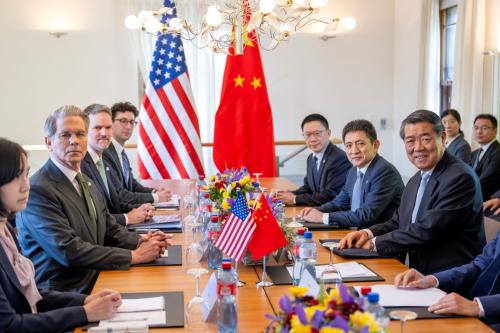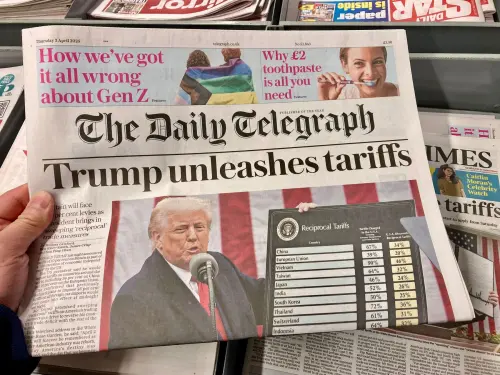Has the African Growth and Opportunity Act (AGOA) achieved its goal of improving trade and investment between the U.S. and Africa? Created in 2000 and renewed in 2015, AGOA is a U.S. government trade program that gives countries in sub-Saharan Africa preferential access to U.S. markets, allowing them to export products to the United States tariff-free. AGOA has certainly helped boost African exports to the United States, but the trade data raise questions about why some countries are better able to capitalize on the preferential trade rules. I found that policy implementation theory—specifically, the ability to bridge the gap between policy intentions and desired outcomes—helps explain this variation and points a way to bridge the gap between high and low performers going forward.
As the White House and Congress consider the future of AGOA post-2025, these insights can aid policymakers and business leaders alike as they explore strategies to further expand U.S.-Africa trade and investment under the program.
African countries vary in their utilization of AGOA
All eligible sub-Saharan African countries (35 countries as of May 2023) stand to benefit from the U.S. trade program, but AGOA utilization rates and results vary widely. Kenya and Lesotho have had some of the highest AGOA utilization rates: 88 percent of Kenyan exports and 99 percent of Lesotho’s exports to the U.S. qualified for zero-tariff treatment. Apparel products dominated both countries’ exports to the United States.
But almost half of all beneficiary countries had a utilization rate of 2 percent or lower during the same time period—this means 98 percent of U.S. imports from those countries were subject to U.S. tariffs. These discrepancies in utilization rates have hindered AGOA’s potential “to tip the scales when it comes to economic development, growth of commercial opportunities, and job creation,” as Witney Schneidman, Kate McNulty, and Natalie Dicharry previously noted.
Why are some countries not benefiting from AGOA?
A number of factors could explain variations in AGOA utilization, including differences in business environments, competing interests, lack of credit, lack of internet access, insufficient capacity, lack of government investment, and production costs and bottlenecks. Given the limited empirical evidence on the direct effects of these factors on AGOA implementation, my research looks at AGOA utilization another way, by using policy implementation theory.
Political scientist Richard Matland explains the two primary factors that determine success or failure in policy implementation: policy ambiguity and policy conflict. The degree of policy conflict is explained by the level of convergence or divergence between rational and often self-interested actors involved in the policymaking process. Since interests regularly diverge, this usually leads to conflict. Policy ambiguity arises when there is a divergence within the epistemic community or key policymakers and stakeholders about approaches to solve specific policy challenges. Matland argues that a combination of high or low ambiguity and conflict create a unique implementation challenge for any given policy.
In the context of AGOA, a country would have high policy ambiguity if it doesn’t produce goods to export that fall under AGOA preferences, or if the overall goals and benefits of AGOA utilization are unclear. Policy conflict within a country may be high if various players—the private sector, the government, foreign investors, workers, etc.—disagree over the terms, vision, or strategy for using AGOA, or if the U.S. takes a country or its trading partners off the beneficiary list.
As of 2022, 18 of the 39 beneficiary countries had developed a strategy to utilize the AGOA program. And 14 of the 16 countries that had published strategies in 2021 increased their non-crude oil exports. Many countries that adopted a national AGOA strategy—such as Mali, Mozambique, Togo, and Zambia—experienced particular success and saw their exports to the U.S. rise by over 90 percent during this period.
While noteworthy, there may be other factors at work. The positive association between having developed a national AGOA strategy and seeing positive outcomes is complex and likely nonlinear. To be sure, a country that already has favorable resources, political will, private sector support, or other enabling factors may be more likely to benefit from AGOA and be more likely to develop a utilization strategy.
At the same time, a national strategy for utilizing AGOA can serve as a way to identify and strengthen those factors. Seen in terms of Matland’s theory, a utilization strategy reduces policy conflict by making sure everyone is on the same page. And having a strategy in place reduces policy ambiguity by laying out a clear path forward to increase exports.
For example, prior to U.S. sanctions, Ethiopia boosted its AGOA-eligible exports after developing a utilization strategy that identified sector-specific constraints and formulated strategies to address them. This strategy led to the creation of a one-stop technical and information hub to assist the five priority product areas the Ethiopian government identified in the country’s AGOA utilization strategy—textiles and garments, leather and leather products, horticulture, handcrafts, and agro-processing. One year after the hub opened, Ethiopia increased its exports to the United States by over 50 percent—much more than the total increase of exports from AGOA-eligible countries to the United States during the same time period, from 2015 to 2016 (19 percent on average).
In 2017, Botswana developed an AGOA utilization strategy that identified specific barriers to exports, and established evaluation criteria and an institutional structure to track key metrics of specific priorities. In 2021, Botswana held further stakeholder engagement meetings with civil servants in various ministries, private sector associations, individual firms, women’s groups and nongovernmental and semi-governmental organizations to gather input on new areas of concern in the economy, resulting in a revised strategy. Botswana’s strategy of continuously adjusting to changing circumstances, may offer an important example for other countries in Africa on how to reduce policy conflict and ambiguity to successfully bridge the gap between policy formulation and implementation.
What Biden’s Africa strategy means for AGOA utilization
Ultimately, the AGOA program has shown benefits for those African countries that use the program more, but as the variance in utilization rates demonstrates, these benefits have not been shared equally among countries. President Biden’s Africa strategy means that AGOA utilization rates will be coming under increased scrutiny as policymakers look to see whether AGOA has delivered on its promise and what is the way forward. The data and the policy implementation theory discussed here suggest that the best way to address these discrepancies and accelerate enabling factors will be by mobilizing a clear, comprehensive, and continuously evolving utilization strategy. It goes without saying that such efforts toward successful implementation should deliver long-term socioeconomic outcomes and better advance mutual U.S. and African interests with the extension of AGOA beyond 2025.
The Brookings Institution is committed to quality, independence, and impact.
We are supported by a diverse array of funders. In line with our values and policies, each Brookings publication represents the sole views of its author(s).








Commentary
Here’s why US-Africa trade under AGOA has been successful for some countries but not others
July 11, 2023